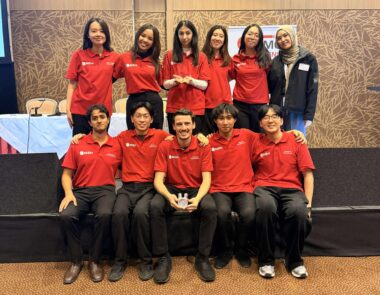Biosensing technology developed by UNSW engineers has made it possible to make portable RAT tests just as accurate as PCR tests carried out in a lab.
When the pandemic started, people who felt unwell had to join long queues for lab-based PCR tests and then wait for two days to learn if they had the COVID-19 virus.
In addition to significant inconvenience, a major drawback was the substantial and expensive logistics needed for such laboratory tests, while testing delays increased the risk of disease spread.
Now, a team of biomedical engineers at UNSW Sydney has developed a new technology offering test strips that are just as accurate as the lab-based PCR tests but offer rapid, on-the-spot disease detection. And according to research published today in Nature Communications, it’s not just public health that the technology may benefit.
Senior researcher Professor Ewa Goldys, with UNSW’s Graduate School of Biomedical Engineering, says the new technology is like having “PCR in your pocket”, and that it opens up possibilities for biomedical and environmental diagnostics in the food industry, agriculture, and biosafety management.
“Not only can we easily detect specific gene sequences in a sample, but, unlike PCR, we can do it at room temperature using a test strip that looks exactly like a well-known RAT Covid test – you already know what to do with it,” she says.
“So, no more queuing for that PCR test in the future. Also, the cost is very low – currently less than a few dollars per test.”
Study author Dr Fei Deng adds that the new test strips could expedite rapid response to emerging pathogens such as mosquito-borne or lumpy skin diseases, reveal hotspots of antibiotic resistance or help look for threatened animal species.
“This could transform human and animal infection control as well as quarantine and bio-diversity conservation efforts,” he says.
“We think we created a new benchmark in biosensing – our gene-based tests will be able to be performed anywhere, any time, by virtually anyone.”
How it works
Co-author Dr Yi Li says that to bring the new test strips up to PCR standards the team first made tiny DNA nano-circles containing a short sequence of the target DNA, such as the COVID virus. Each nano-circle is only about 2 nanometres in size, way too small to be seen by any microscope.
The DNA nano-circles and the tested sample were mixed with CRISPR/Cas proteins.
These proteins – renowned by their association with the Nobel Prize winning CRISPR/Cas gene editing technology – were programmed by the UNSW team to cut DNA of the nano-circles – but only when activated by DNA from the targeted pathogen.“The interaction of a suitably programmed CRISPR/Cas protein with the gene target we are trying to detect causes the DNA nano-circles to break up, linearise and become ‘fake targets’,” Dr Li says.
This novel approach produces a molecular chain reaction.
“We unleash a huge cascade of fake targets which is easy to detect with the testing strips, even if only a few molecules of the original gene target are present.”
The method was illustrated in samples of the COVID-19 virus and helicobacter bacteria that cause stomach ulcers.
Watching with interest
Prof. Goldys says the response from industry to the team’s innovation has been overwhelmingly positive.
“The industrial and clinical rollout of our technology to the Australian industry has already begun, with the intention to keep the manufacturing onshore. We will be building on the emerging industrial infrastructure for the RNA vaccine production.”
She says some of the applications the new biosensing method could be in biosecurity, where testing strips could detect potential invasive marine species; environmental science where DNA testing of the environmental samples could indicate the presence or absence of a particular threatened species; and an intriguing use of the biosensing strips to detect cancer cells.
“In our published study we were also able to detect cancer mutations in patients’ samples in a clinical setting,” Prof. Goldys says.
“We hope this will open a path towards universal monitoring of patients undergoing cancer therapies.”
The research is detailed in the journal Nature Communications and was carried out by researchers affiliated with UNSW and the Garvan Medical Research Institute.
Key Facts:
* potential to make RATs as accurate as PCRs
* also has application for other diagnostic testing used in food, agriculture, shipping (customs), conservation and biosafety management
* uses cutting edge CRISPR/Cas9 technology
* low-cost, convenient and able to be used at room temperature
Contact details:
Lachlan Gilbert
UNSW News & Content
t: +61 404 192 367

